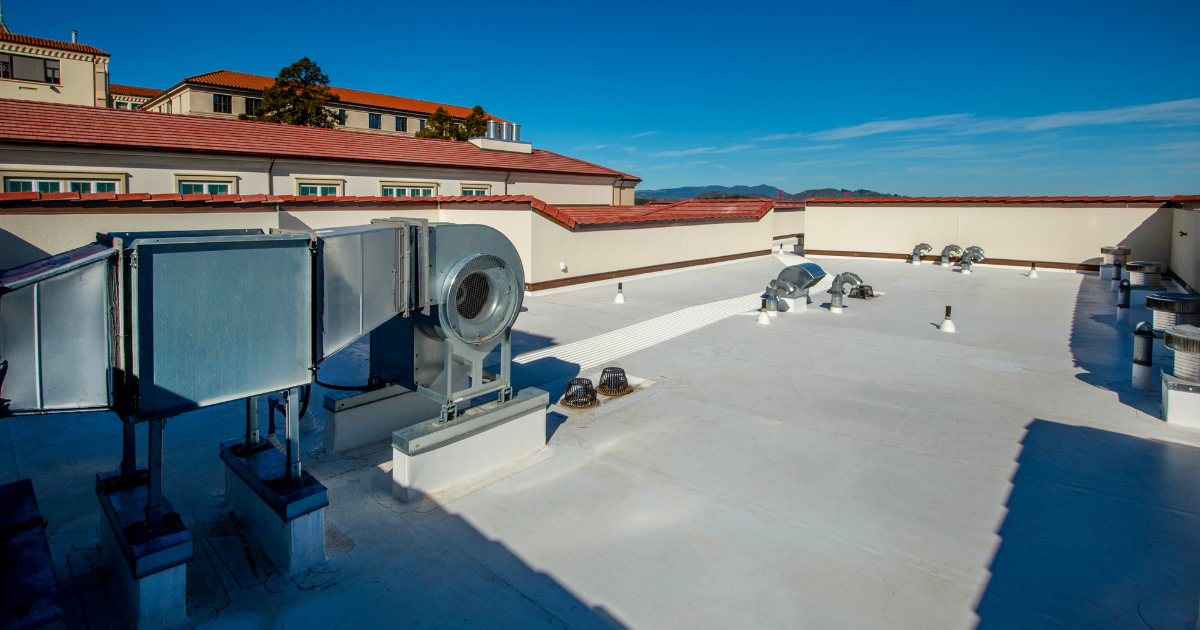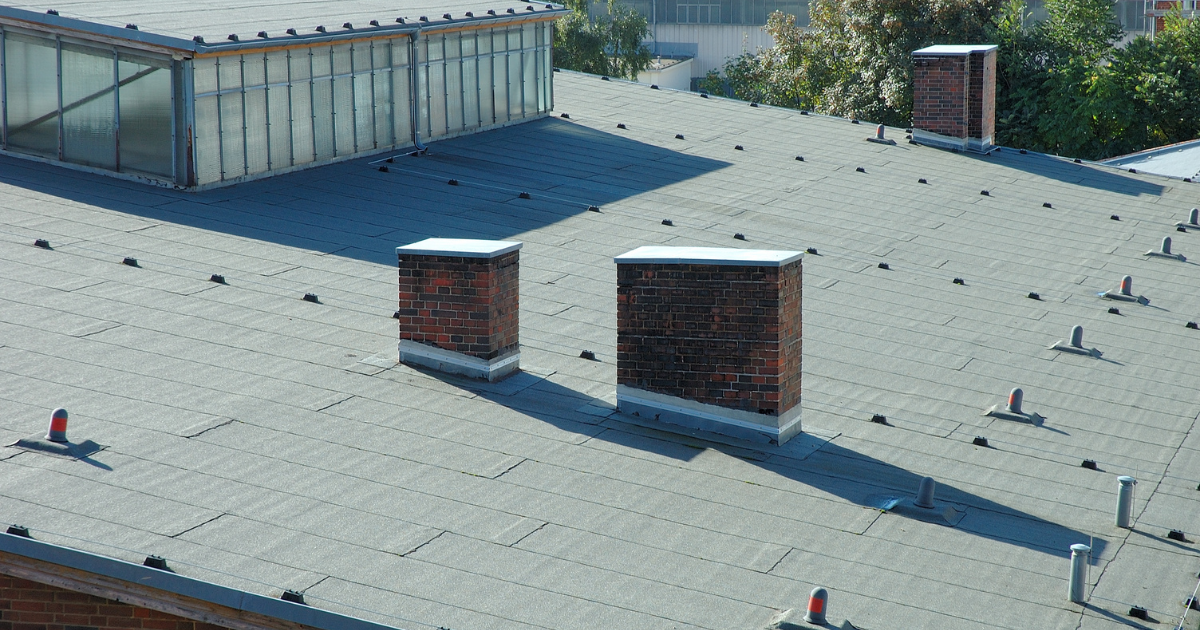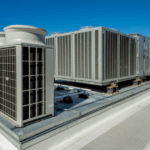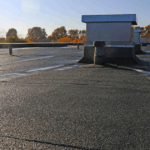
Roof Replacement vs. Repair: Making the Right Call
No commercial property owner wants to hear, “your building might need a new roof.” It’s a costly phrase that immediately raises concerns about budget strain, business disruptions, and insurance headaches. Ignoring warning signs or patching over chronic issues doesn’t solve the problem. In fact, it often delays action and multiplies costs over time.
This is where a well-informed cost-benefit analysis becomes essential.
In this guide, we’ll break down the factors that should guide your roofing decisions from upfront costs and long-term performance to operational risks and tax considerations. Whether you aim to extend the life of your current system or plan for a full roof replacement, Silicoat Roofing helps you make decisions that protect your assets and bottom line. Let’s explore the reality behind roof replacement vs repair and when each approach makes sense.
Understanding the True Condition of Your Roof
Before deciding between roof repair and replacement, you need a clear understanding of your roof’s actual condition. What looks like a minor issue on the surface may hide deeper, more costly structural problems.
Superficial Damage Can Be Misleading
A small leak or visible crack may seem easy to fix. However, roofing systems are complex, and surface-level issues often indicate underlying failures such as:
- Trapped moisture compromising insulation and decking
- Substrate deterioration weakening structural support
- Membrane shrinkage or separation accelerating long-term system failure
Assuming you can simply patch and move on is a risky choice. The longer the true issue remains undiagnosed, the higher the cost and the more likely a full roof replacement becomes necessary.
Early Warning Signs You Shouldn’t Ignore
Certain indicators suggest your roof may require closer evaluation:
- Multiple recurring leaks across different sections of the building
- Ponding water or noticeable dips after rain, especially near drains or seams
- Blistering or bubbling in the roof membrane, signaling trapped moisture or gas
- UV degradation and cracking, particularly in older or exposed materials
These symptoms don’t always mean replacement is inevitable but they do mean spot repairs are often no longer sufficient.
The Value of a Professional Roof Analysis
Rather than guessing whether an issue is minor or a major structural problem, commercial building owners and facility managers should start with a comprehensive roof inspection. A proper assessment may include:
- Infrared scanning to detect hidden moisture within the roof assembly
- Core sampling to evaluate layers beneath the surface
- Drainage analysis to assess slope and water movement
- Photographic documentation to track changes over time
“You can’t make a sound decision without real data, which is why we always start with a full inspection, not assumptions. That’s how we protect our clients from overpaying or under-planning.” – Rick Dodaj, Founder of Silicoat Roofing
These diagnostic tools eliminate uncertainty and prevent wasted investment whether you’re considering roof repairs or a full roof replacement.
Once the true condition of your roof is established, the next step is comparing the financial implications of each option. What’s more cost-effective in the long run ongoing repairs or a full replacement? Let’s break it down.

Comparing Costs: Roof Repairs vs Replacement
When evaluating a roof restoration or replacement, cost is often the first consideration. But commercial building owners and facility managers should resist focusing solely on the upfront investment. Long-term value, risk management, and overall return should guide the decision once a professional has confirmed the issue.
Short-Term Costs: Repairs vs Replacement
Roof Repairs:
Repairs are often faster and more affordable, especially for isolated leaks, localized membrane damage, or newer roof systems. Spot repairs minimize business disruption, require fewer materials, and demand lower labor hours. However, repairs may not address the root cause, particularly if damage is recurring or widespread.
Roof Replacement:
A full roof replacement requires a larger capital outlay. Complete tear-offs or system upgrades need planning, budgeting, and operational adjustments. Yet, replacements can eliminate years of patchwork, upgrade insulation, materials, and drainage, and deliver long-term performance gains.
Roof Restoration – The Middle Ground:
Roof restoration is increasingly popular in regions with extreme weather and intense sun exposure. It’s more comprehensive than a repair but far less expensive than a full replacement (roughly 1/3 the cost). Using multiple layers of silicone or elastomeric coatings, a restored flat commercial roof can gain 20+ years of life.
Bottom Line:
- Choose repairs for limited damage when the roof still has meaningful life left.
- Opt for replacement when ongoing repair costs approach or exceed the cost of starting fresh.
Long-Term Value: Durability, Risk, and ROI
Repairs must be properly diagnosed to be effective. Without identifying underlying issues, quick fixes can lead to recurring problems, rising costs, and operational disruptions. Partnering with an experienced roofing contractor ensures repairs are strategic rather than reactive.
Benefits of Replacement or Restoration:
- Manufacturer warranties from 10 to 30 years
- Energy efficiency with modern membranes and reflective coatings
- Reduced maintenance costs and fewer emergency service calls
- Increased property value for long-term owners or buildings on the market
- Potential insurance premium reductions for upgraded roofing systems
Expert Tip: If repairs over the last 3 years have cost 25–30% of a replacement or restoration, it may be more cost-effective to invest in a comprehensive solution.
Even when upfront costs are higher, thinking long-term can reduce operating costs, improve financial stability, and increase asset value.
Long-Term Roofing Investments and ROI
A commercial roof protects your building while affecting operational costs, insurance, taxes, and property value. Here’s how replacement or restoration can pay off over time:
Energy Efficiency:
Modern roofing systems with reflective coatings and upgraded insulation reduce cooling loads, lowering energy bills by 10–25% annually. Savings compound over time, particularly in manufacturing, healthcare, or logistics facilities.
Tax Incentives:
Under IRS Section 179, many commercial roof replacements qualify for accelerated depreciation. Building owners can deduct the full cost in the year of installation rather than depreciating over decades. Silicoat provides detailed project documentation to support tax claims.
Property Value & Marketability:
A new or restored roof boosts building value. Appraisers, investors, and buyers view roofing conditions as a critical factor in risk assessment and capital planning. Benefits include:
- Higher resale value and faster closings
- Stronger negotiating leverage during lease renewals or refinancing
- Fewer budget shocks and predictable maintenance profiles
Insurance & Risk Management:
New roofs can reduce insurance premiums or secure favorable coverage. Conversely, older roofs with recurring repairs may face higher premiums or denied claims. Ensure contractors provide compliance documentation for wind, fire, and drainage codes.
The Limits of Repairs
Repairs extend roof life but must be strategic. Isolated damage or mid-life roofs may benefit from repairs, but spot fixes alone:
- Don’t qualify for tax incentives
- Don’t lower insurance premiums
- Have minimal impact on property value
At Silicoat, repairs are part of a proactive roofing strategy, not just reactionary fixes. This approach maximizes lifespan, reduces repeated patchwork, and protects long-term investment.

Common Questions About Roof Replacement vs Repair
Can I add a roof coating instead of replacing the roof?
Yes, this is often called a roof restoration. High-quality coatings can extend roof life by 20+ years, improve energy efficiency, and often cost significantly less than a full roof replacement. However, this option is only viable if the existing roof system is in good condition. A professional inspection will determine whether restoration, repair, or full replacement is the best solution for your building.
How do I know if repairs are just delaying the inevitable?
Repeated patching is a clear warning. If the same area has been repaired more than once in 12 months, or you’re noticing interior damage, it’s time for a professional evaluation. An expert can determine whether a roof restoration or full replacement is the most cost-effective path.
Are there seasonal advantages to replacing a roof?
Absolutely. Spring and early fall typically offer the best conditions for commercial roof projects, with faster permit approvals and more predictable weather. These periods allow you to prepare your roof for summer heat or winter storms, reducing the risk of weather-related damage.
Think Strategy, Not Emergency
Choosing between roof replacement, repair, or restoration isn’t just about immediate cost – it’s about long-term value. Short-term savings from patching can quickly evaporate if recurring leaks, energy inefficiencies, or hidden damage remain unaddressed. What seems cheaper today may cost much more in disruptions, liability, and emergency repairs.
The key is a strategic, proactive approach. Start with data-backed inspections and expert guidance, rather than reacting to leaks as they happen. At Silicoat Roofing, we help building owners and facility managers move from reactive fixes to planned, long-term solutions. Don’t wait for the next leak to force action.
Contact us today for a commercial roof analysis and protect your building’s performance, energy efficiency, and value.
About the Author
Rick Dodaj is the founder and CEO of Silicoat Roofing, specializing in commercial roofing solutions that protect businesses and their investments. With extensive experience in commercial roofing, Rick leads a team dedicated to providing cost-effective, long-lasting roofing solutions. Connect with him on LinkedIn to learn more about commercial roof maintenance and protection strategies.


 Previous Post
Previous Post Next Post
Next Post